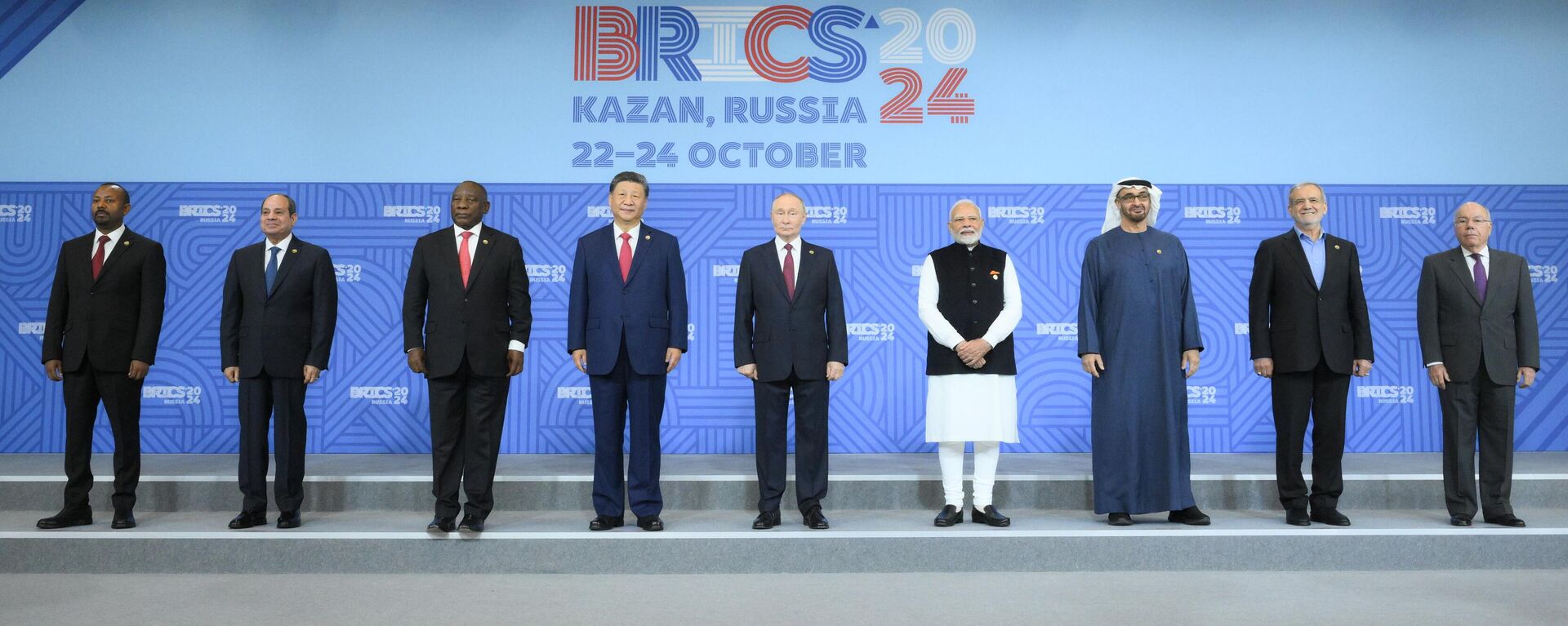https://sputniknews.in/20250628/india-china-relations-whats-next-in-new-chapter-9371098.html
India-China Relations: What’s Next in the New Chapter?
India-China Relations: What’s Next in the New Chapter?
Sputnik India
Tensions between Delhi and Beijing started easing following the 2024 BRICS Summit in Kazan. 28.06.2025, Sputnik India
2025-06-28T20:57+0530
2025-06-28T20:57+0530
2025-06-28T21:11+0530
sputnik opinion
rajnath singh
india
china
the himalayas
shanghai cooperation organisation (sco)
brics
donald trump
ladakh
sino-indian border
https://cdn1.img.sputniknews.in/img/07e9/06/1b/9363729_0:344:2048:1496_1920x0_80_0_0_5306dc96e7889e92d27b097a2b904521.jpg
Indian Defence Minister Rajnath Singh batted for a permanent solution to the border standoff with China after holding talks with his Chinese counterpart, Admiral Dong Jun, during the Shanghai Cooperation Organisation (SCO) Defence Ministers' meeting in China's Qingdao earlier this week.Singh also stressed border management and having a permanent solution to border demarcation by rejuvenating the established mechanisms. He emphasised the need to create good neighbourly conditions to achieve the best mutual benefits as well as to cooperate for stability in Asia and the world, the ministry added.However, experts consider that achieving long-lasting peace at the Sino-Indian border is difficult, despite improved relations between Beijing and New Delhi of late.Yet, constant military skirmishes need to stop so there is long-lasting peace and stability on both sides of the border, she added.Now that both India and China are growing in their international stature, it makes sense strategically to develop warm, if not friendly, relations. This can be done by respecting mutual interests and objectives, and not resorting to constant border conflicts. But that warmth cannot be achieved without the basics being achieved, the academic underscored.On the other hand, political scientist Suyash Desai, who specialises in China's foreign and defence policies, believes that a permanent solution between India and China is only possible if both are ready to give up certain parts of their claim to the disputed territory across three sectors.The India-China border is a tinderbox that could explode at any time. When there are structural compulsions, like there currently are with the uncertainty over the Donald Trump administration, the border is relatively calm. But this doesn't guarantee peace on the border. Confidence assurances, which were established in the early 1990s, helped, but they are outdated. So there is no guarantee of peace on the border, he highlighted.It is important to remember that India and China were locked in a military standoff since May 2020 that only ended last year after Prime Minister Narendra Modi and Chinese President Xi Jinping managed to break the ice during the BRICS Summit in Russia in October 2024.Following their one-to-one meeting, China pulled its troops from Depsang and Demchok in Eastern Ladakh, completing disengagement from all friction points that had become a bone of contention between the armies of the two states in the standoff.
https://sputniknews.in/20250625/us-not-worlds-big-brother---bjp-politician-backs-brics-stance-on-mideast-9354712.html
india
china
the himalayas
ladakh
sino-indian border
Sputnik India
feedback.hindi@sputniknews.com
+74956456601
MIA „Rossiya Segodnya“
2025
Pawan Atri
https://cdn1.img.sputniknews.in/img/07e6/0c/13/139630_147:0:831:684_100x100_80_0_0_8fa2b25903e7787fe6a2698552c167df.png
Pawan Atri
https://cdn1.img.sputniknews.in/img/07e6/0c/13/139630_147:0:831:684_100x100_80_0_0_8fa2b25903e7787fe6a2698552c167df.png
News
en_IN
Sputnik India
feedback.hindi@sputniknews.com
+74956456601
MIA „Rossiya Segodnya“
Sputnik India
feedback.hindi@sputniknews.com
+74956456601
MIA „Rossiya Segodnya“
Pawan Atri
https://cdn1.img.sputniknews.in/img/07e6/0c/13/139630_147:0:831:684_100x100_80_0_0_8fa2b25903e7787fe6a2698552c167df.png
rajnath singh, india, china, the himalayas, shanghai cooperation organisation (sco), brics, donald trump, ladakh, sino-indian border, xi jinping
rajnath singh, india, china, the himalayas, shanghai cooperation organisation (sco), brics, donald trump, ladakh, sino-indian border, xi jinping
India-China Relations: What’s Next in the New Chapter?
20:57 28.06.2025 (Updated: 21:11 28.06.2025) Tensions between Delhi and Beijing started easing following the 2024 BRICS Summit in Kazan.
Indian Defence Minister Rajnath Singh batted for a permanent solution to the border standoff with China after holding talks with his Chinese counterpart, Admiral Dong Jun, during the Shanghai Cooperation Organisation (SCO) Defence Ministers' meeting in China's Qingdao earlier this week.
"The two ministers held in-depth discussions on the need to maintain peace and tranquility along the Indo-China border," the Indian Ministry of Defence said in a statement.
Singh also stressed border management and having a permanent solution to border demarcation by rejuvenating the established mechanisms. He emphasised the need to create good neighbourly conditions to
achieve the best mutual benefits as well as to cooperate for stability in Asia and the world, the ministry added.
However, experts consider that achieving long-lasting peace at the Sino-Indian border is difficult, despite improved relations between Beijing and New Delhi of late.
"The permanent solution to the India-China border issue is to accept the Line of Actual Control (LAC), which is the de-facto border between the two countries, as a mutually accepted international demarcation," stated Pooja Bhatt, a professor of international relations at the Jindal School of International Affairs.
Yet, constant military skirmishes need to stop so there is long-lasting peace and stability on both sides of the border, she added.
Now that both India and China are growing in their international stature, it makes sense strategically to develop warm, if not friendly, relations. This can be done by respecting mutual interests and objectives, and not
resorting to constant border conflicts. But that warmth cannot be achieved without the basics being achieved, the academic underscored.
On the other hand, political scientist Suyash Desai, who specialises in China's foreign and defence policies, believes that a permanent solution between India and China is only possible if both are ready to give up certain parts of their claim to the disputed territory across three sectors.
"In 1948, the People's Republic of China had 21 territorial disputes. Today it only has six, of which Tibet and Taiwan, according to Chinese literature, are non-negotiable. Similarly, land is a sacred issue in India, which makes compromising on the land difficult. Thus, solving this issue looks difficult," Desai told Sputnik India.
The India-China border is a tinderbox
that could explode at any time. When there are structural compulsions, like there currently are with the uncertainty over the Donald Trump administration, the border is relatively calm. But this doesn't guarantee peace on the border. Confidence assurances, which were established in the early 1990s, helped, but they are outdated. So there is no guarantee of peace on the border, he highlighted.
It is important to remember that India and China were locked in a military standoff since May 2020 that only ended last year after Prime Minister Narendra Modi and Chinese President Xi Jinping managed to break the ice during the BRICS Summit in Russia in October 2024.
Following their one-to-one meeting, China pulled its troops from Depsang and Demchok in Eastern Ladakh, completing disengagement from all friction points that had become a bone of contention between the armies of the two states in the standoff.



